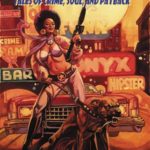By Elaine Viets
 Every author uses he said or she said. Many of us believe a simple said is better than four-dollar words like “opined” or “uttered.”
Every author uses he said or she said. Many of us believe a simple said is better than four-dollar words like “opined” or “uttered.”
Recently, something my editor said made me rethink my own use of said. She said I didn’t need to use he said or she said with every paragraph. She’d been reading the first chapter of Fire and Ashes, my November 2017 Angela Richman Death Investigator mystery. My editor wasn’t against getting rid of all saids – just the ones where it’s obvious who is speaking.
In this excerpt, Angela has been called out to a fatal fire at Luther Ridley Delor’s mansion in mythical Chouteau Forest, Missouri. At age seventy, the Forest financier created a major scandal when he left his wife of forty years for Kendra Salvato, a twenty-year-old manicurist. Luther gave Kendra an engagement ring with a diamond bigger than Delaware, and swore they’d marry as soon as he was free. Now his mansion is burning. Someone inside has died, and the firefighters are about to bring out a body. Nobody knows if it’s Kendra or Luther. Here’s the first version that sparked my editor’s comment:
 Hastily dressed gawkers gathered in the cul-de-sac outside the burning house. Angela stood next to a scrawny-legged bald man in blue boxers and sandals, and tried not to look at his pale, flabby chest. She knew him: Ollie Champlain. Ollie lived on stale bar snacks and martinis at the Forest Country Club.
Hastily dressed gawkers gathered in the cul-de-sac outside the burning house. Angela stood next to a scrawny-legged bald man in blue boxers and sandals, and tried not to look at his pale, flabby chest. She knew him: Ollie Champlain. Ollie lived on stale bar snacks and martinis at the Forest Country Club.
“Woo-eee!” Ollie said. “You can almost smell the money burning. That’s Luther’s house.”
“Don’t be disgusting,” said a worried woman clutching a long baggy plaid bathrobe. “The smell is horrible.”
Angela silently agreed. She caught the toxic stink of melting plastic mixed with the stomach-turning stench of burned meat and hair. The flames were eating the victim’s body.
Ollie refused to be shamed. He acted as if the fatal fire was staged for his entertainment. “Look at the firefighters taking axes to that bay window,” he said. “I can hear the corks popping in that thousand-bottle wine room.”
“Hmpf,” Plaid Bathrobe said. “The way Luther drinks, I doubt if he could keep a thousand bottles.”
“He was definitely pissed tonight,” Ollie said. “I watched him stagger home with his little Mexican cutie. Kendra had to help him inside the house. It was fun watching her in that tight white dress. Luther was too drunk to walk into his house, much less run out of it. Jeez, I hope that’s not her burning in that house. What a waste of a fine p–”
Plaid Bathrobe glared at him. He said “– a fine young woman. He’s a shriveled old coot. I hope she gets out alive.”
Now take a look at the same section after a said-ectomy.
 Hastily dressed gawkers gathered in the cul-de-sac outside the burning house. Angela stood next to a scrawny-legged bald man in blue boxers and sandals, and tried not to look at his pale, flabby chest. She knew him: Ollie Champlain. Ollie lived on stale bar snacks and martinis at the Forest Country Club.
Hastily dressed gawkers gathered in the cul-de-sac outside the burning house. Angela stood next to a scrawny-legged bald man in blue boxers and sandals, and tried not to look at his pale, flabby chest. She knew him: Ollie Champlain. Ollie lived on stale bar snacks and martinis at the Forest Country Club.
“Woo-eee!” Ollie said. “You can almost smell the money burning. That’s Luther’s house.”
“Don’t be disgusting.” The worried woman next to him pulled her baggy plaid bathrobe tighter around her pillowy middle. “The smell is horrible.”
Angela silently agreed. She caught the toxic stink of melting plastic mixed with the stomach-turning stench of burned meat and hair. The flames were eating the victim’s body.
Ollie refused to be shamed. He acted as if the fatal fire was staged for his entertainment. “Look at the firefighters taking axes to that bay window. I can hear the corks popping in that thousand-bottle wine room.”
“Hmpf.” Plaid Bathrobe clearly disapproved of Luther and Ollie. “The way Luther drinks, I doubt if he could keep a thousand bottles.”
“He was definitely pissed tonight. I watched him stagger home with his little Mexican cutie. Kendra had to help him inside the house. It was fun watching her in that tight white dress. Luther was too drunk to walk into his house, much less run out of it. Jeez, I hope that’s not her burning in that house. What a waste of a fine p–”
Plaid Bathrobe glared him into changing his words. “– a fine young woman. He’s a shriveled old coot. I hope she gets out alive.”
What’s your opinion? Is this a case of the less said, the sooner ended?
*************************************************************************************************
 Win 44 Caliber Funk, a new anthology with my short story, His Funkalicious Majesty. Set in the glittering disco days of the 1970s. Click Contests at www.elaineviets.com
Win 44 Caliber Funk, a new anthology with my short story, His Funkalicious Majesty. Set in the glittering disco days of the 1970s. Click Contests at www.elaineviets.com

I agree. Skip the dialogue tag when a body cue shows who’s speaking, or when it’s obvious. Enjoyed your excerpt, Elaine.
Thanks, Sue. You can read the rest of FIRE AND ASHES in November — with a lot fewer tags in the second draft.
I agree. The use of unnecessary dialogue tags is monotonous and distracting to the reader.
Agreed, she said.
Elaine, your editor is quite right that said is not always necessary. It’s there to alert us as to who is talking when it isn’t otherwise clear. An action tag is good for variety. However, it’s a little trickier when you have a scene with more than two characters, as you do. Your instincts the first time around were not, therefore, completely misplaced.
I’m going to cavil just a bit with the “said-ectomy” here, for the following reason: it creates needless redundancies.
“Hmpf.” Plaid Bathrobe clearly disapproved of Luther and Ollie. “The way Luther drinks, I doubt if he could keep a thousand bottles.”
The “Hmpf” already shows us PB disapproves. And the last line puts the clincher on it. Thus, we don’t need the tell. In this case, I’d use the first version.
“He was definitely pissed tonight. I watched him stagger home with his little Mexican cutie. Kendra had to help him inside the house. It was fun watching her in that tight white dress. Luther was too drunk to walk into his house, much less run out of it. Jeez, I hope that’s not her burning in that house. What a waste of a fine p–”
Plaid Bathrobe glared him into changing his words. “– a fine young woman. He’s a shriveled old coot. I hope she gets out alive.”
Because we actually SEE the words that are changed, we don’t need to be TOLD that’s what is about to happen. RUE – Resist the Urge to Explain.
Also, it’s a tad confusing to have PB glaring and then the dialogue in the same line. That triggers the thought that PB is speaking, and makes us stop to analyze via the em-dash. I’d render it this way:
” … Jeez, I hope that’s not her burning in that house. What a waste of a fine p–”
Plaid Bathrobe glared him.
“– a fine young woman. He’s a shriveled old coot. I hope she gets out alive.”
This way the stimulus-response transaction is crisp and clear. And humorous.
Thanks for raising the issue, Elaine.
It’s not too late for me to have another crack at the manuscript. Thanks, Joe.
Overusing dialogue tags with beats is a pet peeve of mine. When I read them in published work, I wonder how editors let them get through. Then I see them in my work, and I go nuts because the editor and I both missed them.
I tend to prefer beats to tags, although both are necessary. But if a reader is noticing them, they’ve stopped doing their work and have become a distraction rather than a help.
I have to agree with JSB. With more than two characters in a scene, more tags and beats are necessary for clarity. Using a mix of the two will help them fade away, though.
Good points.
” … Jeez, I hope that’s not her burning in that house. What a waste of a fine p–”
Plaid Bathrobe glared him.
“– a fine young woman. He’s a shriveled old coot. I hope she gets out alive.”
This example bothers me. It seems that authors attempt to use dialogue to flesh out characters and these sorts of “finishing off” or “blocking” another character from finishing what they were going to say is just plain wasteful and more of a distraction than any dialogue tag.
What’s wrong with letting them both finish a complete thought?
“Jeez, I hope that’s not her burning in that house. What a waste of a fine piece of ass.”
Plaid Bathrobe glared him, “Don’t talk like that about her. She’s a fine young woman. He’s a shriveled old coot. I hope she gets out alive.”
Anyways, I prefer less dialogue tags, and if an author can pull it off without a bump in my reading, that’s a good thing!
After reading JSB’s post above, apparently it’s the same person in both dialogue pieces. See how confusing those can be? LOL
Actually, JSB had it wrong. It’s too different people. And Plaid Bathrobe is the type who would not let someone say “piece of ass” in her presence.
Thanks for placing this Elaine. I am working a on a novel now and was thinking about this issue-I’m going back in to delete my too many “saids!”
Go forth and said less, Patrick.
I firmly believe that attribution through action rather than tags is preferable. The trouble I’m having with my current WIP is that I have 12 women in an attic going through old trunks and hatboxes and such. You know how it is when that many women get together. I’ve used “said” so many times it almost hurts. I finally decided just to go ahead and write the entire 200,000 words (did I say it’s going to be a LONG book?) and then go back and worry about how to take out three-fourths of the said-tags and use action instead.
BTW, I agree with James Scott Bell’s modifications.
“I never use dialog tags when a piece of stage business can be used instead. A bare bones ‘he said’ does little to advance the story plot or characterize anyone.” She shook her head as she thumped the backspace to correct her poor typing for the third time. “The stage business gives it a more readable flow and lets you actually SAY something useful to your story.” She read the last bit for typos, then typed the closing quotation mark. She sat back in her worn leather desk chair. “There. See what I mean?” She chuckled at her own cleverness and hit “Post.”
“LOL,” she wrote. And really did laugh out loud.
The said-ectomy helped in this case. OTOH one of my pet peeves when reading is a long passage of dialogue, especially when interrupted by a line or two of description or action (obviously there to break up said dialogue) with no said attribution except at the start. Sometimes I lose track of who is speaking, and sometimes it’s no longer obvious who is speaking. On numerous occasions I’ve had to count up lines back to the last “said” to figure out who’s speaking, and then sometimes it still doesn’t make sense. Got to find the balance.
I agree, CF. I’ve had to count backwards more than once. Looking for that balance. Ommmmmmmm.
One of my fiction professors had a unique theory of writing. He believed (he has since passed) that writing is a highly stylized form of drawing and painting, and that all of the same parts and forms of those present in painting and drawing, are, or should be, present in writing: light, form, color, implied movement, and perspective as well as others.
The use of dialog tags serve the same purpose as a line in a painting or drawing that differentiates a building from the landscape around it. In writing, he said, the dialog tag is a stop. That stop can (or should) be used to differentiate or to emphasize something. He said motion picture filming and editing–usually the editing–uses certain things like light and motion to complement or emphasize the scene: when John Wayne pulled his gun, sometimes, he would thumb the hammer as he spoke to emphasize the moment. Sometimes, the editor would leave the long shot and do a close up of the minute action of pulling back the hammer. Dialog and action and background are part of the same form, it is a good thing to combine them with the total scene and action. My professor noted that writers can use the same principle in writing. For example:
“Awright, pilgrim, drop the bags and walk away from them,” he said. He cocked the hammer and waved Clanton away from the bank bags. Clanton said nothing, but kicked up some dirt that sailed into the breeze, then whirled away into nothing. The bags were stuffed pretty full. “Drop to your knees with your hands behind your head. If you don’t . . . ” he growled.
For me, the use of he said, she said, is an opportunity to add color, form, motion, or other elements to the scene. That’s why I use the tags. I agree that they can be tedious if all they do is simply stop dialog. But, Foster said, they shouldn’t. They should combine to bring light, form, action, mood, or other quality, to the scene.
I second the point about using tags when you have many characters in a scene at once. (Fran above has a whole illegal football team combing through her attic…yikes!) One point I always stress to writers when I critique is try not to have too many actors on the stage at one time…it makes it harder for the reader to focus on the pivotal action. My loose rule of thumb is only three people are allowed to have speaking parts at a time. (Of course this has exceptions but rarely). If you others, they should be mere “spear-carriers” (so named after opera personnel who stand behind the stars and hold the spears).
I dunno…maybe I am old-fashioned here, but I think well-place “said(s)” are fine. It is a fine useful word and it sort of disappears on the page for the reader if you are doing your job as a writer well. But that said, I, too, always comb through the final WIP and ferret out the unnecessary ones.
“Well-placed” is the key word here, PJ. My editor detected that I’d slipped back into newspaper style. As a former reporter, you know what I mean.
I feel your said pain, Elaine. It’s a challenging change, though both versions actually work fine for me.
In my first few novels I relied on said a lot. But in the manuscript draft I recently finished, I believe I only used said maybe a couple dozen times. (Now I’m curious and will have to count as I read!) If I put it in now, it’s usually as part of a page-long string of dialogue. Funny how our writing changes.
I’m delighted to hear FIRE AND ASHES is on its way!
Great post.
Another consideration relevant to this topic is the issue of too many action tags.
I had culled “saids” so aggressively in one draft that the action tags flooded the work (‘actions’ had become inconsequential and contributed to wordiness).
I believe JSB has cautioned about this. It’s a caution worth heeding imo.
BTW I really liked the set-up and scene!
When I was attempting to learn this craft, I did everything possible to get that third person out of the room so I had only two characters to deal with. They went to the bathroom, got coffee, poured drinks, answered the phone …
I remember reading Browne & King’s Self Editing for Fiction Writers and they wrote “said” is invisible. I realized how true this was when I forced myself to go back and re-read three pages of Robert B. Parker where he’d tagged almost every line with “said.” (Of course, if you’re going audio, they’ll pounce all over you.)
As was said above, the ultimate goal is to know who’s speaking, be it via tag, beat, interior monologue, or a distinct character voice. Dialogue with out attribution becomes talking heads, and my brain can manage no more than four switches without a clue.
I agree with most of the comments. Too many speech tags get in the way. Understanding should be the main guide. As Terry points out however, Robt. B. Parker filled his pages with “said” and it is somewhat invisible. I listened to a Parker read by Joe Mantegna recently and he downplayed the “said”s and it sounded fine.
But, we’re all not RBP, certainly not me, so I try to cut down on the speech tags.
Pingback: Writing Links 2/13/17 – Where Genres Collide